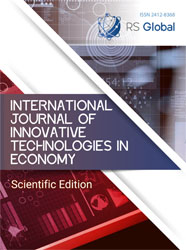THE IMPACT OF DUBAI'S WORLD GREEN ECONOMY SUMMIT ON CHINA'S NEW THINKING OF GREEN ECONOMY
Abstract
As the global epidemic continues to have an impact on the world economy and public health, the issue of climate change is still the core threat facing the world. The "2020 Global Risk Report" issued by the World Economic Forum (WEF) pointed out that the five major risks facing the world in the next 10 years are all related to the environment. A study on this pointed out: If governments adopt greener economic recovery plans, the world can reduce the temperature rise by 0.3°C by the middle of this century. In other words, accelerating green economic growth after the epidemic and promoting green transformation in all aspects have become the top issues facing countries. Some of the economic recovery plans proposed by Western Europe, South Korea, Canada and other countries may have a positive effect on the environment. Economic stimulus plans such as China, the United States, Australia, Italy, and Japan will invest most of the funds in non-green areas. Among them, the US economic stimulus plan may the negative environmental impact is the greatest. The Dubai's World Green Economy Summit held this year undoubtedly produced a revolutionary change in thinking for the largest developing country like China.
References
The Dubai's World Green Economy Summit supports global efforts to shape a sustainable future. (2021). Retrieved from https://wam.ae/zhCN/details/1395302939130. (In Chin.)
Zhang Ningchuan (2016). Can environmental regulations achieve a win-win situation of "pollution reduction" and "efficiency enhancement" − Evidence from the "standard" and "non-standard" In: quasi-experiments of key environmental protection cities. (09), p. 126- 143.
Liu Jianping (2016). Measurement of the economic growth effect of energy conservation and emission reduction in China's industrial sectors and analysis of influencing factors. In: World Economy. (03), p. 166 - 192.
Chen Lu (2016). Research on the linkage relationship between economic development and environmental pollution in 20 key urban agglomerations in my country. In: Urban Development Research. (07), p. 70 -81.
Lu Zhiqiang(2016). The impact of economic structure changes on China's carbon emissions: analysis based on the IO ~ SDA method. In: China Population, Resources and Environment. (03), p. 37 -45.
Zhang Xiao (2016). Energy structure, traffic mode and haze pollution - Research based on spatial measurement model. In: Finance and Trade Economics. (01), p. 147 -160.
Fan Qingquan (2016). The realization mechanism of carbon intensity emission reduction target and the optimization design of industry emission reduction path. In: World Economy. (07), p.168 -192.
Liu Xiuyan (2016). Does the sprawling urban space aggravate haze pollution? An empirical analysis from China’s PM2.5 data. In: Finance, Trade and Economics. (11), p.146 - 160.
Zhou Hongchun (2016). Sharing economy boosts green consumption. In: Shandong Economic Strategy Research. (06), p. 56- 57.
Duan Lida (2016). Research on environmental management optimization in the context of negative protection of environmental interests in my country. In: Management World. (01), p.176 -177.
Adhering to green development is a profound revolution in the outlook on development. (2018). Retrieved from http://cpc.people.com.cn/xuexi/n1/2018/0224/c385476-29831795.html. (In Chin.)
Views:
572
Downloads:
404
Copyright (c) 2021 Xie Chunyu

This work is licensed under a Creative Commons Attribution 4.0 International License.
All articles are published in open-access and licensed under a Creative Commons Attribution 4.0 International License (CC BY 4.0). Hence, authors retain copyright to the content of the articles.
CC BY 4.0 License allows content to be copied, adapted, displayed, distributed, re-published or otherwise re-used for any purpose including for adaptation and commercial use provided the content is attributed.














